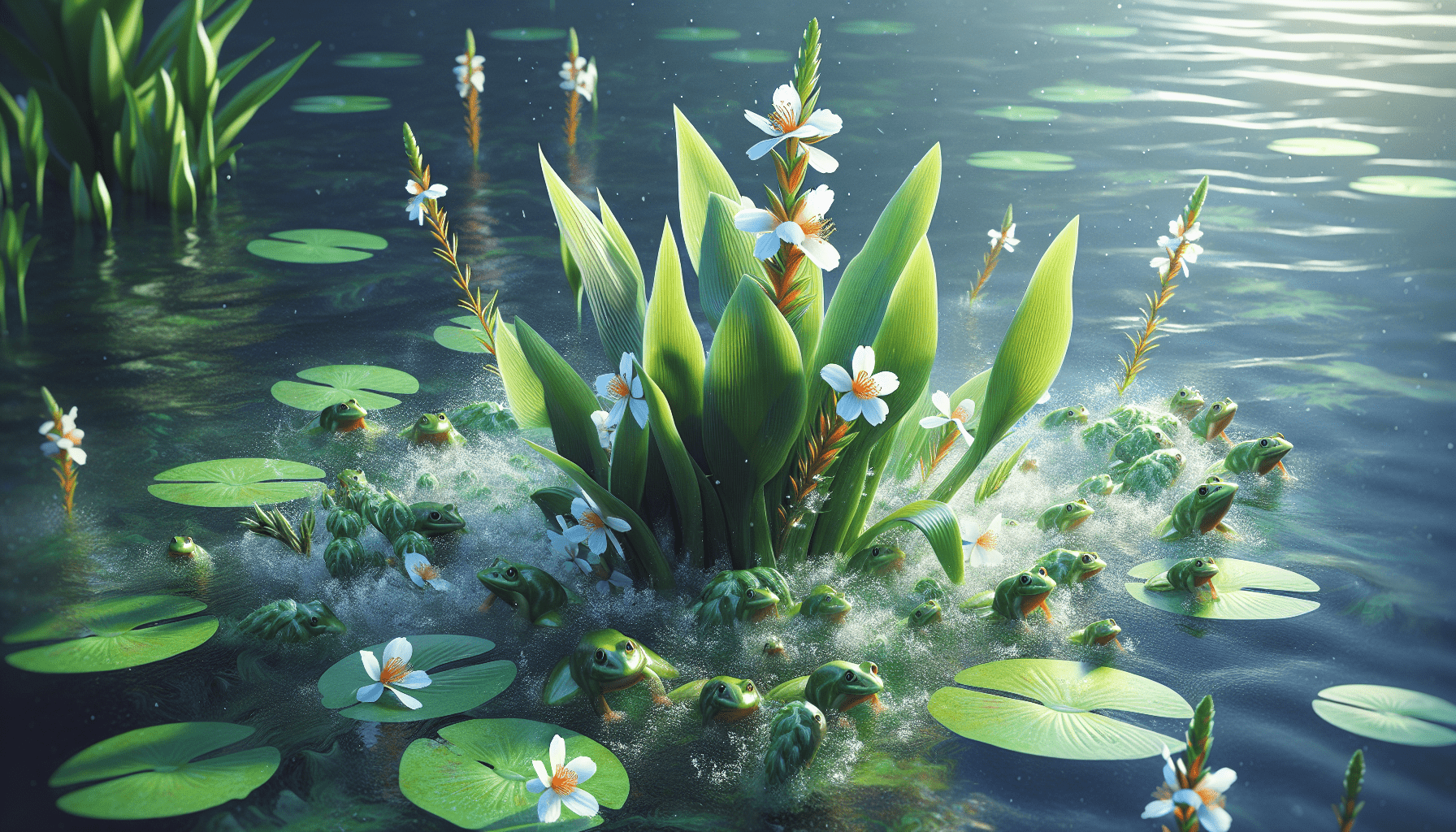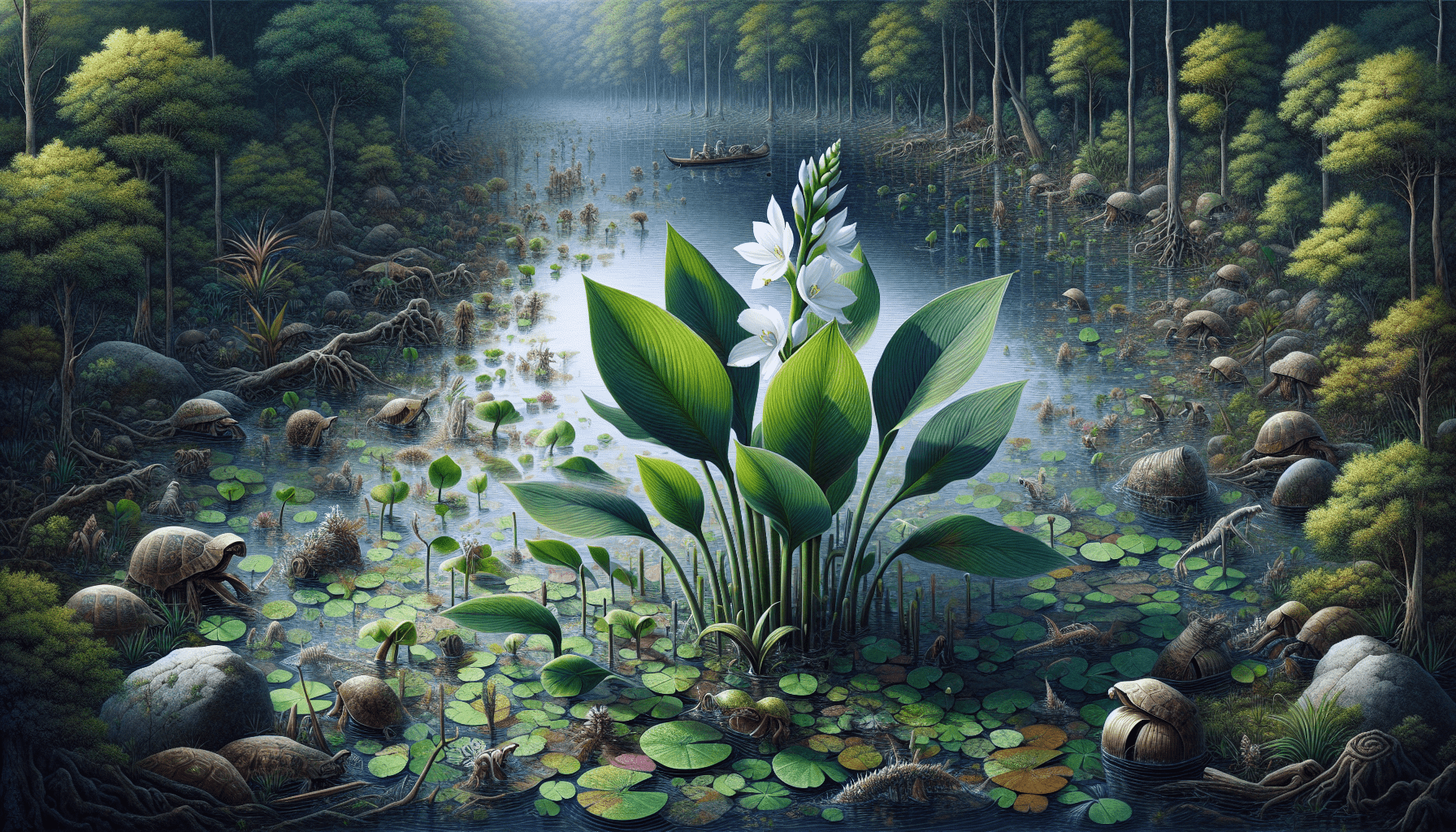In this article, you will explore the world of aquatic vegetation, specifically the plant named Sagittaria Brevirostra. Often simply referred to as an ‘aquatic weed’, this intriguing species inhabits a number of unique ecosystems and its features, advantages, and disadvantages are in a word, fascinating. The forthcoming discussion will succinctly address its botanical characteristics, ecological roles, as well as its potential impacts on both natural and human environments. Engaging on this journey, you’re bound to gain an in-depth understanding of this notable organism which grows beneath the mirror of the water and occupies our freshwater habitats.

Overview of Sagittaria Brevirostra
Basic information about the plant
Sagittaria Brevirostra, often referred to as the aquatic weed, is a unique species of plant that thrives in freshwater habitats. This perennial plant belongs to the Alismataceae family and encompasses a wide array of morphological features that distinguish it from its aquatic counterparts.
Scientific classification details
The scientific classification of Sagittaria Brevirostra starts with it being part of the Plantae kingdom. It belongs to the Tracheophytes division and is a member of the Angiosperms class. Further, it is a part of the Alismatales order and the Alismataceae family.
Common names for the plant
While its scientific name is Sagittaria Brevirostra, this plant is also often known by its common names. Some of these include “Shortfruit Arrowhead”, “Bushy Arrowhead”, or simply “Arrowhead”, owing to the characteristic shape of its leaves.
Species origin and distribution
The origins of Sagittaria Brevirostra trace back to North America, however, it is now broadly disseminated across various parts of the world. The distribution spans across moist and damp areas, typically thriving in shallow water bodies such as ponds and marshes.
Morphological Features
Description of the plant’s structure
Sagittaria Brevirostra embodies a unique structure, characterized by its upright stems that generally attain a height of 0.6-1.2 meters. The plant features elongated, lanceolate leaves with a distinctive arrowhead shape, earning its common name.
Characteristics of the leaves
The leaves of the plant, an identified hallmark of its identity, display a unique lanceolate shape reminiscent of an arrowhead. A glossy green hue adorns the leaves contributing to the overall aesthetics of the habitat in which it grows.
Details on the flowers and fruits of the plant
The flowers of Sagittaria Brevirostra are white with three petals, usually budding during summer months. Following the blooming season, the plant bears fruits that are short and plump, commonly referred to as ‘achenes’.
Root system description
The root system of this plant is a rhizomatous, contributing to its clonal propagation and quick infiltration into diverse habitats. This extensive rooting system aids the plant to anchor itself securely in the sloppy, muddy bottoms of water bodies where it is typically found.
Habitat and Ecology
Typical environments where the plant grows
Sagittaria Brevirostra notably grows in moist and damp environments, displaying a preference for freshwater habitats. It is typically spotted in shallow ponds, marshes, and along streams and creeks.
Seasonal behaviors and lifecycles
This Arrowhead plant, being perennial, showcases a lifecycle that spans across several years. The plant seeds in the late summer or early fall and thrives robustly during the warm months, only to become dormant in winter.
Interaction with other flora and fauna
Sagittaria Brevirostra coexists with a variety of other aquatic species. Its presence often attracts a range of fauna, including waterfowl and other birds who feed on its seeds and foliage, thus playing a key role in the ecosystem it inhabits.
Adaptations to its environment
This plant exhibits a strong adaption to its environment through its ability to grow in a range of soil conditions – from sandy to loamy and even clayey soils. Its robust root system allows it to securely grip the unstable muddy underwater soils.

Cultivation and Growth
Ideal growing conditions
Ideal growing conditions for Sagittaria Brevirostra involve a combination of factors. It thrives under full sunlight and requires a constantly damp or wet ground for growth, with pH levels ranging from acidic to alkaline.
Propagation methods
The propagation of this species is achieved through the dispersal of its achenes and essentially, its rhizomatous root system.
Potential growth rate
With adequate growing conditions, Sagittaria Brevirostra boasts a substantial growth rate, with its dense vegetation quick to cover extensive patches of a water surface within a short time.
Common pests and diseases
Being an aquatic plant, Sagittaria Brevirostra is less susceptible to typical plant pests and diseases. However, it might occasionally fall prey to certain parasitic infections which can affect its growth and spread.
Economic Importance
Use in horticulture or agriculture
Owing to its aesthetic appeal and quick growth, Sagittaria Brevirostra is leveraged in the horticultural industry, specifically in water gardens and ponds. Its thick foliage serves as an efficient ground cover in damp regions of landscape design.
Potential medicinal uses
While there’s no widely recognized medicinal use of Sagittaria Brevirostra, certain tribes in its native lands reportedly utilized it for its purported therapeutic qualities.
Other human uses
The robust root system of this plant aids in soil stabilization in areas vulnerable to erosion, serving an essential ecological role. Moreover, its prevalence in a variety of environments makes it an ideal educational tool for aquatic botany.
Impact on the local or global economy
Despite its specialized use in certain spheres, Sagittaria Brevirostra’s direct impact on the economic scale remains significantly limited.
Environmental Impact and Control
How it affects local ecosystems
Sagittaria Brevirostra plays a vital role in local ecosystems, providing food and shelter to several aquatic and semi-aquatic species. Its dense vegetation can, however, lead to the overcrowding of water bodies, impacting their overall health and biodiversity.
Potential as an invasive species
Given its rapid growth rate and propensity to thrive in varying conditions, Sagittaria Brevirostra possesses the potential to become an invasive species if introduced to non-native habitats.
Current methods for control or eradication
Mechanical removal, including cutting and uprooting, is commonly employed to control its proliferation. On a larger scale, the use of aquatic herbicides is utilized for its effective eradication.
Potential challenges in managing the plant
Ensuring the restricted growth of Sagittaria Brevirostra poses challenges due to its resilient nature, rapid propagation, and ability to grow in nearly all types of soil conditions.
Conservation Status
Current conservation status
As per current data, Sagittaria Brevirostra does not classify under any specific threat category, and its conservation status remains widely unstudied.
Threats to the species
The primary threat to Sagittaria Brevirostra’s survival would be the loss of suitably wet habitats due to drafting for human activities or global climate change influencing water levels.
Conservation efforts and protected areas
Sagittaria Brevirostra is not typically the subject of exclusive conservation efforts and doesnt inhabit protected areas due its its widespread distribution and aggressive growth.
Research and Studies on Sagittaria Brevirostra
Historical and recent research
Historical and recent research on Sagittaria Brevirostra remains largely limited, with sparse comprehensive studies conducted on the species.
Key findings from studies
Key findings generally encompass its morphology, habitat preferences, propagation rate, and potential as an invasive species if not kept in check.
Potential future research directions
Future research should focus on its potential medicinal value, its impact on biodiversity, and comprehensive methods for its controlled growth.
Comparison with Other Aquatic Weeds
Similarities and differences to other aquatic plants
While Sagittaria Brevirostra shares similarity with other aquatic plants in terms of habitat preference, its distinguishing factors lie in its unique leaf structure, fast growth rate and its ability to thrive in a range of soil types.
Ecological roles compared to other species
Its ability to provide food and shelter to various species and contribute to soil stabilization exceeds that of many other aquatic weeds, setting it apart in its ecological role.
How control methods differ from other weeds
Control methods for Sagittaria Brevirostra coincide closely with those for other invasive aquatic weeds, including mechanical removal and chemical control.
Fun Facts and Additional Information
Interesting facts about the plant
One fascinating fact about Sagittaria Brevirostra is its arrow-shaped leaves, from which it earns its popular name ‘Arrowhead’.
Misconceptions and myths
One common misconception is that because of its invasive growth, it is always detrimental. However, in balanced ecosystems, it plays a vital role in providing food and habitat for many species.
Potential for use in educational programs
Sagittaria Brevirostra’s widespread distribution and unique characteristics make it ideal for educational programs concerned with aquatic flora and ecosystems.